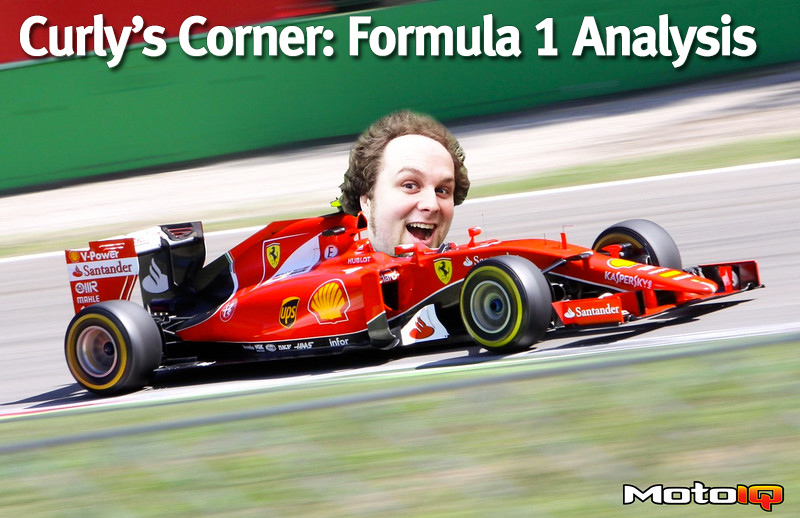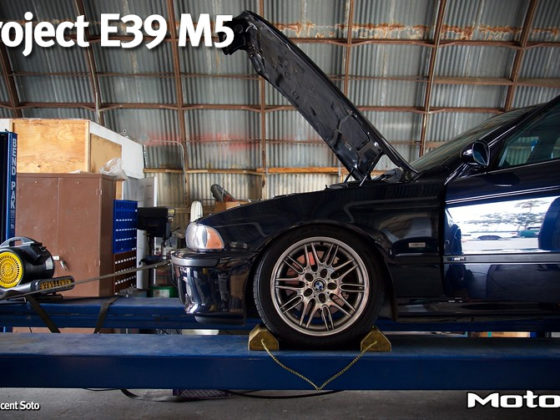 Curly's Corner: A Nerd's Eye on Formula 1 – Brazilian Grand Prix
Curly's Corner: A Nerd's Eye on Formula 1 – Brazilian Grand Prix
Welcome back to our post-race breakdown of Formula 1! In case you missed it, MotoIQ will be bringing you its own particular nerdtastic take on the latest news and developments in F1. Impress your neighbors, stun your friends, and woo the ladies with your newfound F1 knowledge!
Round 18 Recap
Lewis Hamilton sealed up his fourth World Championship in Mexico. In his mind, I’m sure Hamilton planned to pull an early lead on his title rival Sebastian Vettel, manage the gap to the field behind, and cruise home to his second Mexico win in a row, but the World Driver’s Championship. It didn’t exactly work out that way. First, Vettel took pole with Red Bull Racing’s Max Verstappen alongside with Hamilton third. In order to secure the championship, Hamilton simply had to finish 5th or better, OR Vettel had to finish worse than 2nd. When the lights went green, Vettel and Verstappen battled for the lead with Hamilton drafting the pair and moving wide as the field moved down the long main straight at Autódromo Hermanos Rodríguez. Verstappen went to the outside of Vettel, nipping the Ferrari as they went through the 1-2-3 chicane. Hamilton followed the Dutchman, only to be clipped by Vettel’s front wing, flattening Hamilton’s right rear tire. The pair limped to the pits to make repairs, with both returning to the race, albeit at the rear of the field. Vettel took the lightest damage, only requiring a front wing and new tires. Hamilton’s shredded rear tire destroyed the right side of his diffuser and caused him handling trouble throughout the rest of the race. As Vettel carved his way back through the field, Hamilton struggled to make it past the slowest of the backmarkers. Vettel was eventually able to make his way all the way up to 4th, but this would not be enough to extend the points battle into Brazil. Lewis Hamilton is once again World Champion, matching Alain Prost and Sebastian Vettel in their tally of four. Ahead of both Vettel and Hamilton lie only Juan Manuel Fangio, and Michael Schumacher with 5 and 7 championships respectively. Not only is Hamilton’s achievement one for the record books, but think of this: never before have two 4-or-more-time World Champions faced off against each other on track. This makes not only 2018, but the remaining races of 2017 some that we should already be excited for.
While Hamilton was becoming champion again, Max Verstappen was running away with the Mexico race, easily winning his third career victory, and his second in 2017. While Hamilton and Vettel are champions of today, Verstappen is finally showing the form that will make him the champion of tomorrow. I know keep harping on how impressive his drives of late have been, but keep in mind, my opinion of him before the summer break of this year was “overambitious asshole.” How he’s gone from that to winning races with brilliant passes is a story I hope we hear soon: it has been nothing short of a stunning transformation in just a handful of races. After the first lap crash, the Mexico race was fairly tame, and really the only excitement came from the raft of Renault engine failures: four of the six Renault powered cars that took the lights did not see the checkered flag, including both Renault factory cars. While Verstappen seemed the Renault least likely to blow, it was still a bit nerve wracking to watch as the laps wound down. The reason for Renault’s problems was also the reason Red Bull’s chassis was so good in Mexico. With the incredibly high elevation of Mexico City (almost a mile and a half above sea level), air density is incredibly low. This means less power, less downforce, and also less cooling. Renault was battling the cooling part all weekend long and when in traffic, the cooling situation became dire. Verstappen had two advantages over his fellow Renault drivers. First, he spent the entire race out front and for the most part in clean air. This meant uninterrupted cooling, remembering that the turbulence caused by following another car puts less air volume through the radiators. Verstappen also had the pace to keep a steady lead without having to push 100%. Backing off and with clean air, he had a lower chance of blowing an engine.
While the race was fairly tame, the two weeks between Mexico and Brazil showed far more fireworks. One big piece of news was the announcement that Felipe Massa would be retiring again. With Williams continuing to delay an announcement on who would be pairing with Lance Stroll in 2018, Massa decided to take his own fate into his hands and announce he was stepping out of Formula 1 for 2018 so he could celebrate his career in front of his home fans (again). It’s easy to be cynical about Massa retiring two years in a row, but remember the circumstances that brought him back in the first place. Nico Rosberg won the 2016 championship, retired a few weeks later, and left Mercedes scrambling for a replacement. Williams had announced a 2017 lineup of Bottas and Stroll, and mercedes ended up poaching Bottas. With few free drivers available, Williams opted to re-hire Massa (likely for a noticeable raise). Massa said yes and did one more farewell tour. It seems much more definitive this time around though: we may see Massa at the wheel of a sports car or Brazilian Stock car, but his time in F1 seems to be complete.
The even bigger, and much more controversial news, was from Liberty Media and the FIA as they introduced a proposal for the next generation of engines due in 2021. The proposal was aimed to tackle a number of problems with the current regulations- namely cost, complexity, noise, and increased interest from new engine suppliers. Removing the MGU-H (the hybrid component that recovers energy from the turbocharger) is the heart of the proposed regulations. Raising the rev limit by 3,000 RPMs to improve the sound, and replacing the current automated ERS systems with the older style KERS systems from the pre-hybrid V8 era were aimed at improving the show for fans. Current ERS deploys at pre-programmed intervals to give the driver the best launch out of corners. Putting the control of the KERS back into the driver’s hands makes for more passing opportunities. The engines themselves would remain broadly the same- 1.6L V6s, with a single, turbocharger, though that turbo would either be standardized, or made to a standard size. The hybrid controls and energy storage would also standardize to reduce costs. Finally, in a bid to make it easier for teams to move between power unit suppliers, the overall package size and installation requirements would be commonized to reduce the investment teams have to make to swap engines. Currently, power units are mostly mated only to their respective supplier’s gearbox. When moving from, say, Renault to Honda, the entire rear of the car needs to be redesigned to account for the new engine, MGU systems, transmission, and accessories. This affects the floor, sidepods, engine cover, rear wing, diffuser, and even the suspension. By standardizing the size and some of these parts or their location or mounting, the goal would be to greatly reduce the number of systems teams need to redesign when moving to a new engine. This could even lead the way to a customer transmission that independent teams can utilize (similar to the old Hewland F400 transmissions that were hugely popular in the 60s and 70s), which would also reduce costs.

The reception to these rules has been less than positive. On the engine supplier side, both Mercedes and Renault claimed the new rules would cause another cost increase, since the removal of the MGU-H and ERS systems would fundamentally change how the engine builds power. They both claim most of their respective engines would need to be redesigned from the ground up to accommodate the new rules. I feel this is a bit of political grandstanding. Yes, the current engines would have to be redesigned in some ways for the new rules. Would they be ground up new designs? No way. In this case, it would be about redesigning the current engines around a different power delivery and different form of efficiency. Breaking down the problem further, the main focus would be on balancing turbo lag with top end power, which may require changes in the rod ratio, crank throw, and bore. Keep in mind the extra 3,000 RPM would also require these changes and would allow for different turbo sizing to keep the turbo usable at the higher RPM. Surely MotoIQ's contributor, Khiem, can chime in as to how that extra RPM would affect the team’s turbo sizing.
Meanwhile, Ferrari, in the form of Sergio Marchionne, threatened to leave Formula 1 if these engine rules go into effect. Let’s get two things clear about this: Marchionne being pissed off at something and Ferrari threatening to quit F1 are not news. If Marchionne is bad mouthing someone or something, it’s just a day that ends in Y. If Ferrari is threatening to quit F1, it just means they’ve been having a bad year. The threat of Ferrari leaving F1 is at this point as dull and hollow as an old soda straw. What’s even odder is, aside from disliking the rules, Ferrari didn’t even really explain what it was they wanted. Marchionne made claims about “engine uniqueness,” but they were rather vague. It is well known that Ferrari would love a return to the V12s of yore, the signature Ferrari engine, and an engine that has not been seen in Formula 1 for over two decades.



